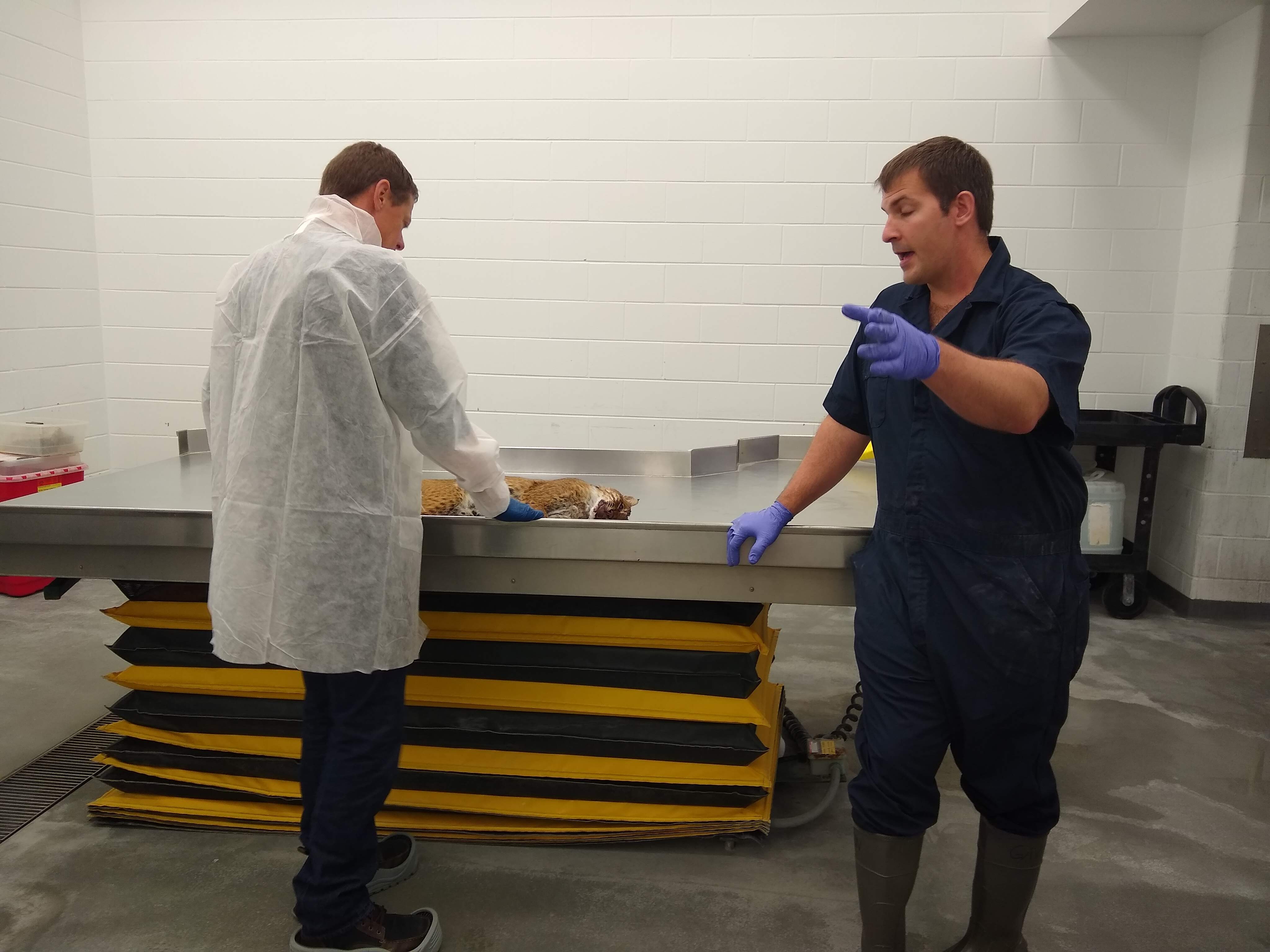A Wildlife Pathologist: Gavin Hitchener
My role within the laboratory is multi-functional, and I serve many stakeholders, including the wildlife health laboratory and the anatomic pathology group. I also act as the director of the Cornell Duck Research Laboratory and serve as a consultant for poultry-related diseases and prevention. I am intimately involved with teaching veterinary students, anatomic pathology residents, and occasionally clinically-oriented, veterinary wildlife interns. My primary functions are to provide rapid and accurate diagnoses of wildlife and companion animal diseases and to always be monitoring for the interplay between these two with an overriding public health concern for potential zoonotic diseases. Every day is different and depending on my service schedule I can start before the rest of my family awakes and continue working long after they are asleep.
6:00 am: Wake up – sneak out of bed and work on cases from the prior day.
6:30 am: Read stories with my daughter before we get ready for “school/work”.
7:30-7:45 am: Leave for work – an 8-minute commute followed by a 6-minute walk from the parking lot to the laboratory.
8:00-9:00 am: Attend morning pathology rounds. This discussion of cases with colleagues is an opportunity to gain insight into common or not-so-common diseases or pathological processes. It also enables me to engage with resident teaching.
9:00-9:30 am: Go to my office and drop off my computer – check with Melissa Fadden on any wildlife cases that have been received. I then go to the necropsy floor to confirm cases are there and begin set-up for these cases while in street clothes. Typically, additional cases are pending that are “surprises”. I engage with technical staff to assist if needed. I then change into necropsy clothing to protect myself from contacting any pathogens and begin necropsies. There is usually a mixture of birds, mesocarnivores, and possibly large animals. There might also be a surprise brain extraction for rabies testing or a chronic wasting disease sample to collect while I’m in full personal protective gear, which includes a Tyvek suit over my coveralls, rubber boots, face mask, face shield, two pairs of latex gloves, and a plastic apron.
12:00-12:30 pm: Finish requesting additional diagnostic tests for tissues I have collected during the necropsies, leave the necropsy floor, change back into my street clothes, and return to my office.
12:30-1:30 pm: Eat my lunch while looking at cases under the microscope.
1:30-5:00 pm: Write necropsy reports and consult on cases with residents, sign off on their work, and add additional comments as needed.
5:00-8:30 pm: Drive home and family time.
8:30-9:30 pm: Finalize some necropsy reports and read histopathology slides as necessary and able.
9:30-10:30 pm: Watch some TV before falling asleep with my wife after the children are in bed.
I like my position and the work that I do. Every day is different and brings new challenges and opportunities. Performing wildlife necropsies is always an adventure. I'm constantly amazed by the unexpected discoveries we make during these examinations. It is truly humbling to see just how much we have yet to learn about these incredible creatures. I'm lucky enough to work alongside some amazing professionals who teach me something new every day.




